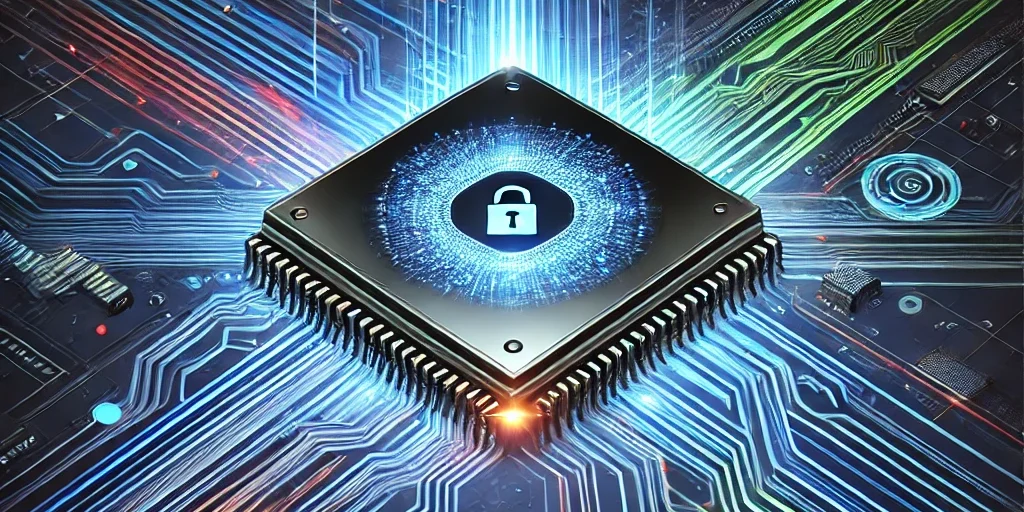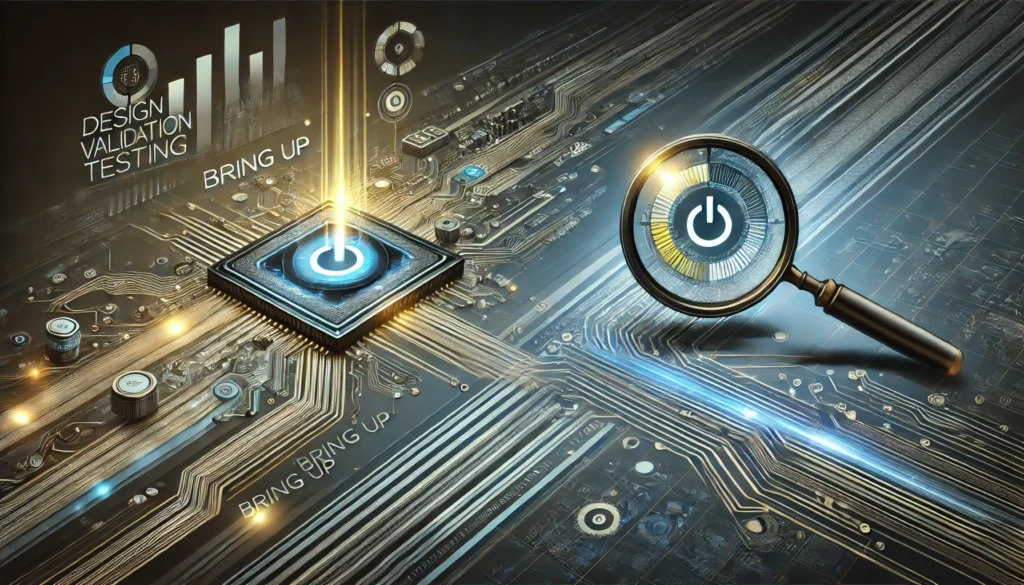The security of electronic systems is becoming increasingly relevant, especially with the advancement of technologies and the growing complexity of integrated circuits. One of the emerging threats in this scenario is the hardware Trojan – a malicious insertion during the chip manufacturing process that can compromise the functionality, confidentiality, and integrity of devices. In this article, we explore the taxonomy of hardware Trojans, detailing their characteristics, insertion points along the supply chain, and the various triggers and payloads that attackers can exploit.
What Are Hardware Trojans?
Hardware Trojans are intentional modifications made to integrated circuits with the goal of altering the normal behavior of a chip. They can go unnoticed during testing and later be activated to:
- Alter or control the system’s functionality;
- Leak sensitive information;
- Reduce reliability or accelerate the aging of components.
This threat becomes even more concerning considering that attacks can occur at various stages of chip development and manufacturing.
Insertion Phases in the Supply Chain
The chip supply chain is complex and involves several stages, each with its own vulnerabilities for hardware Trojan insertion. Here are the main phases:
1. System Specification
- Defining Functionality: In this phase, the system’s requirements and main functionalities are established, such as size, power consumption, and communication protocols.
- Attack Possibility: An attacker might deliberately alter module functionalities or modify communication protocols, compromising the system’s performance and security.
2. Circuit Design
- Collaboration with Third Parties: Modern designs frequently involve third-party IPs, design tools, and libraries that might be outside the direct control of the user or the design team.
- Vulnerability: The complexity and variety of sources make this phase particularly vulnerable, allowing Trojans to be inserted in a subtle and hard-to-detect manner.
3. Mask Fabrication
- Lithography Process: After the design phase, the chip goes through mask fabrication, where the circuit layout is transferred onto wafers.
- Risk: Attacks can occur by altering the mask or modifying the chemical composition to accelerate component wear, such as increasing electron migration in the power or clock networks.
4. Chip Assembly
- Component Integration: During assembly, additional components may be connected to the chip, enabling the addition of extra wires to leak information or exert unauthorized control.
- Example of Threat: Unauthorized connections might allow the extraction of sensitive data or improper activation of chip functions.
5. Testing Phase
- Functionality and Reliability Verification: Beyond validating system operation, testing must ensure that no malicious modifications are present.
- Challenge: Hardware Trojans inserted in earlier phases might escape traditional testing methods, representing a hidden risk even after performance verification.
Triggers and Payloads of Hardware Trojans
How Are They Activated?
Hardware Trojans can remain dormant until a specific event triggers them. The triggers can be:
- Always Active: Some Trojans modify physical characteristics, such as transistor parameters, and remain active continuously without needing a specific trigger.
- Event-Triggered: They can be activated by specific conditions, such as:
- Counters reaching a preset value (time bombs);
- Changes in temperature or voltage;
- External signals, like a button press or wireless command.
What Impact Do They Have Once Activated?
Once activated, a Trojan can cause various types of damage:
- Functionality Modification: Altering system operations – for example, allowing incorrect computations or disabling critical functions (the so-called “killer switch”).
- Information Leakage: Exploiting side channels, such as electromagnetic emissions, to extract sensitive data.
- Reliability Reduction: Activating components that drain resources or accelerate system wear, thereby shortening the system’s lifespan.
Insertion Points Within the System
Hardware Trojans can be embedded in various parts of the integrated circuit, each with its own specifics:
- Processing Units: Alterations in processing logic can compromise critical system functions.
- Memory: Trojans inserted in memory can modify data or monitor activities for malicious purposes.
- I/O Devices: These control communication between the chip and the external world, potentially intercepting or altering transmitted data.
- Power Supply and Clock Networks: Changes in these components can cause operational failures or create conditions for data leakage through side channels.
Classification Based on Physical Characteristics
In addition to the insertion phase and triggers, hardware Trojans can be categorized according to their physical characteristics:
- Functional vs. Parametric:
- Functional: These change the system’s functionality, such as adding processing units or modifying control signals.
- Parametric: These do not alter functionality but change physical parameters (e.g., wire thickness or transistor size) to reduce chip reliability.
- Size and Distribution:
- Large (Centralized): These are grouped in a single area of the chip and can be easily identified, yet they can also cause significant damage.
- Small (Distributed): Scattered across the chip, these Trojans take advantage of available white space and are harder to detect without detailed analysis.
- Layout Redesign Requirement:
- Some Trojans require a complete redesign of the chip layout for insertion, while others can be integrated without significantly altering the original design.
Practical Examples and Final Considerations
For instance, consider a simple circuit that calculates the square of a number. An attacker might modify the circuit so that it also accepts invalid numbers (like 10 or 11) – a subtle change that could serve as a “password” to activate malicious functions. In another example, replacing a control signal with an additional logic gate enables the attacker to control the activation or deactivation of a functional block, functioning as a real “kill switch” for the component.
The complexity and subtlety of hardware Trojans demand a robust approach in terms of secure design and thorough verification throughout the supply chain. Researchers and security engineers continue to develop detection and mitigation methods to counter these threats, which can compromise not only performance but also the overall security of modern systems.
Conclusion
The taxonomy of hardware Trojans reveals a multifaceted scenario, where every stage of chip development and manufacturing can be exploited to insert vulnerabilities. Understanding the various classification criteria—from the insertion phase, through the triggers and payloads, to the physical characteristics—is essential for developing effective protection and detection strategies. As technology advances, the battle against these threats becomes increasingly crucial to ensure the integrity and reliability of modern systems.
This article offers a detailed insight into the threats posed by hardware Trojans and highlights the importance of rigorous security practices in the chip production chain. Stay tuned for more innovations in hardware security and keep your systems protected.
To further explore topics related to hardware Trojans and secure chip design, check out the following articles:
- Integrated Circuit Metering: Protecting Your Intellectual Property in the World of Chips: Learn how metering techniques can safeguard chip designs and prevent unauthorized reproduction.
- Physical Attacks: Unveiling Hardware Security Threats: Discover the fundamentals of physical attacks and how they relate to hardware security challenges.
- Physical Attacks on Hardware: Unveiling Threats and Defense Strategies: Explore practical strategies to defend against physical attacks and ensure hardware reliability.
- Side-Channel Attacks: Exploring Vulnerabilities in Modern Cryptography: Understand how side-channel attacks can exploit hardware vulnerabilities and how to mitigate them.
These articles provide a comprehensive view of hardware security, offering insights into protecting integrated circuits and mitigating vulnerabilities.






Pingback: Unveiling Hardware Trojan Detection and the Design of Trusted Integrated Circuits - FortShield: Security for Professional Developers